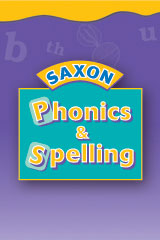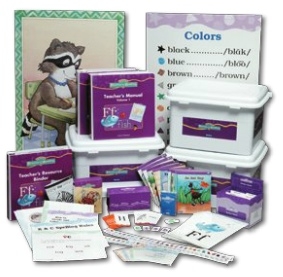Saxon Phonics Program Third Grade
Posted on by admin
- The Saxon phonics program is a supplementation home school curriculum that is designed to assist you in helping your child learn how to read.There are two separate curriculums. One is for those wh The Saxon phonics is a supplement homeschool curriculum that is designed to assist you in helping your child learn how to read.
- East Side Elementary / First Grade / Taira Blankenship. Saxon Phonics; Saxon Phonics. Here you will find all our Saxon Phonics homework pages. If you don't remember what lesson ask your student.
SAXON Vowel Coding Rules:
Saxon Phonics applies the same incremental, spiraling principals that are used in their math program. New content is taught in small increments, then continually applied and reviewed to achieve mastery and retention. The methodology is somewhat similar to Writing Road to Reading's (WRTR) in that it is rule oriented: many, detailed rules are taught throughout the program.
- VOWEL RULE 1: Short Vowels: (lesson 2) A vowel followed by a consonant is short. (“The door is closed”) Code it with a breve.
- VOWEL RULE 2:Long Vowels: (lesson 3) An open, accented vowel (not followed by a consonant) is long. Code it with a macron and an accent.
- VOWEL RULE 3: (lesson 41) A vowel followed by a consonant and a silent e is long; code the vowel with a macron, and cross out the silent e.
- VOWEL RULE 4: (Schwa):(lesson 84) Open, unaccented vowels usually have the following sounds: a is schwa; e, o, and u are long; and i is short. Any vowel can have the /u/ sound. Coded with an upside down e. (schwa)
Spelling Rules
Saxon Phonics Program Third Grade Math

- K and C Spelling Rules: (lesson 23)
- k before e, i, or y
- c before a, o, u, and any consonant
- Final /k/ Spelling Rules: (lesson 29)
- ck after a short vowel
- k after a consonant or a vowel digraph
- ke after a long vowel
- c at the end of a word with two or more syllables
- Floss Rule: (lesson 52) When a one-syllable root word has a short vowelsound followed by the sound /f/, /l/, /s/, it is usually spelled ff, ll, ss, zz.
- Final /v/ Spelling Rule: (lesson 53) When a word has the final sound /v/, it is spelled ve.
- Final /s/ Spelling Rules: (lesson 78)
- ss after a short vowel
- ce after a long vowel
- se after anything else
- Adding a Consonant Suffix: (lesson 88) To spell a word with a consonant suffix, just add the suffix to the end of the root word.
- Adding a Vowel Suffix-Dropping Rule: (lesson 88) When a word endswith a silent e, drop the e before adding a vowel suffix.
- Adding a Vowel Suffix-Doubling Rule: (lesson 88) When the final syllable of a word is accented and ends with one vowel and one consonant,double the final consonant before adding a vowel suffix.
- J & G Spelling Rule: (lesson 109)
- j before a, o, or u
- g before e, i, or y
- Final /ch/ Spelling Rules: (lesson 116)
- tch after a short vowel
- ch after anything else
- Final /j/ Spelling Rule: (lesson 117)
- dge after a short vowel
- ge after anything else
Business environment in a global context pdf to excel pdf. Syllable Division
Saxon Phonics Publishers

2nd Grade Saxon Phonics Pdf
- How to Divide and Label a Word: (lesson 36) vc/cv
- Syllable Division Rule vccv (lesson 39) vc'/cv; vc/cv'
- Syllable Division Rule vcv (lesson 81) v'/cv; vc'/v; v/cv'
- Syllable Division Rule vc/cvc/cv (lesson 92)
- Syllable Division Rules vcccv (lesson 99) vc/ccv; vcc/cv
Definitions for Coding and Understanding Saxon Phonics:

- Breve - a coding mark used to indicate a vowel's short sound
- Cedilla - a coding mark on the letter c to indicate a soft sound
- Code - to mark a word with symbols to provide information about how to pronounce it
- Combination - two letters that come together to make an unexpected sound (ar, er, ir, or, ur, qu, wh); coded with an arc
- Digraph - two letters that come together to make one new sound (consonant digraphs: ch, ck, ng, ph, sh, th; vowel digraphs: ai, au, aw, ay, ea, ee, ei, ew, ey, ie, oa, oo, ow, ue); underline to code
- Diphthong - two vowel sounds that come together so quickly that they are considered one syllable (oi, ou, ow, oy); code with an arc
- Final, stable syllable - a nonphonetic syllable that occurs in the final position frequently enough to be considered stable (ble, cle, dle, fle, gle, kle, ple, sle, tle, zle, tion); code with a bracket
- Ghost Letter Digraphs - two letters that make one sound; first sound is silent (gn, kn, wr); silent letters are coded with a diagonal slash
- High-frequency words - those words that occur most often in written text
- K-back - a coding mark consisting of a vertical line on the back of a cthat makes the /k/ sound
- Macron - a coding mark used to indicate a vowel's long sound; line drawn above a vowel saying its long name
- Prefix - a letter or group of letters added to the beginning of a root word that changes the meaning or usage of the word (dis, pre, un)
- Root word - a word with no prefix or suffix added
- Schwa - a coding mark resembling an upside-down e placed over a vowel to indicate the short u sound
- Sight word -a word of which all or part does not follow phonetic rules
- Sneaky e - the e in the vowel rule v-e; it makes the vowel have a long sound (a-e, e-e, i-e, o-e, u-e); coded by drawing a diagonal slash through the silent e and a macron drawn above the long vowel
- Suffix - a letter or group of letters added to the end of a root word that changes the meaning or usage of the word (vowel suffix: ed, er, es, est, ing, y; consonant suffix: ful, less, ly, ness, s); suffixes are coded by boxing in the affix added to the root word
- Syllable - a word or part of a word that contains only one vowel sound and is made by one impulse of the voice; syllables are split with a vertical line
- Trigraph - three letters that come together to make one sound (dge, igh, tch); underline trigraphs to code
- Twin consonsants - two identical consonants making only one sound; coded with a diagonal slash for silent letters
- Voice line - a coding mark consisting of a horizontal line through the middle of a letter or letters, representing a voiced sound (s, th)
- 'Wild Colt' Words - words that only have one vowel and break the rule by sounding like a long vowel